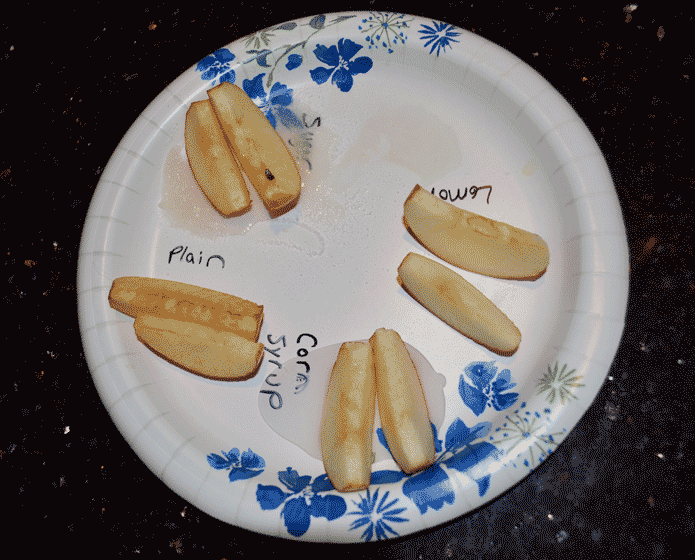How Food is Preserved
Posted by Admin / in Science Articles
In nature, organic material, including the food we eat, does not last long before spoiling. Bacteria also eats meats, fruits, and vegetables and causes our food to spoil. Over the years, advancements have been made in the way we are able to keep our food fresh.
Early people did not have much scientific knowledge, but they used trial and error to learn new things. They discovered that if meat was smoked it would last much longer than regular cooked meat. We later learned that there are phenolic compounds in the smoke that slow down the growth of harmful bacteria. The smoking process allowed people to preserve their food longer after hunting or butchering a domestic animal.
Around 6500 B.C. salt mines were discovered in Salzburg, Austria. It was also discovered that when salt was added to food it allowed the food to be eaten longer (even though it was very salty). The scientific reason is that the salt removes the water in the food. The bacteria cannot survive without water so the growth of bateria is slowed down.
800 B.C. Ancient Greeks discover that food does not spoil as fast when it is cooled by ice or snow. This early discovery used a method we still use today for many foods in our refigerators to slow bacteria growth in fresh foods.
1803 It was almost 2600 years after discovering that cold temperatures allowed foods to last longer did people discover that a storage box that was insulated helps all the food in the box consistantly last longer. This was the first use of an ice box.
1810 Canning was first invented by a chef in France named Nicolas Appert. He discovered that by cooking foods and sealing it in metal cans, the food would last longer. How this actually works is that cooking the foods kills that bacteria. When the food is sealed in cans bacteria cannot reach the food so it lasts much longer. Many pre-cooked foods like soup, sauces, and vegetables are still canned today. Some uncooked foods are also canned today such as canned fruit. The corn syrup or fruit juice canned with the fruits stops oxidation of the fruit. See this science experiment stop oxidation in fruit.
1864 Pasteurization is discovered by Louis Pasteur. Pasteur heated foods to a very high temperature and then cooled them quickly. Most of the existing bacteria in the food or drink is killed during pasteurization. Then the food or drink can be sealed or kept cool to last much longer. Drinks like apple juice and milk are pasteurized today.
1925 Flash-freezing food was developed by Clarence Birdseye. Flash freezing rapidly cools food to a frozen state. This method of keeping food color to stop the growth of bacteria is an improvement on the original ancient Greek idea. Flash-freezing is also found to provide improved food quality when the frozen food is thawed.
1949 An inventor from Cincinnati, Ohio develops the first portable refrigeration unit for truck and train cars. The invention allowed foods to be transported between countries without spoiling. This invention allow chain restaurants and fast-food companies to start.
1969 The first foods were transported to the moon. The astronauts took freeze-dried foods to the moon. The freeze drying process was the combination of two methods that were found to increase the useful life of food including drying and rapid freezing.
1990 Irradiation of foods is approved by the USDA. Irradiation is the process of exposing foods to an irradiation field. The foods are considered safe and according to scientists do not absorb any radiation. Irradiation is widely used now on produce such as stawberries, dried spices, and poultry.









